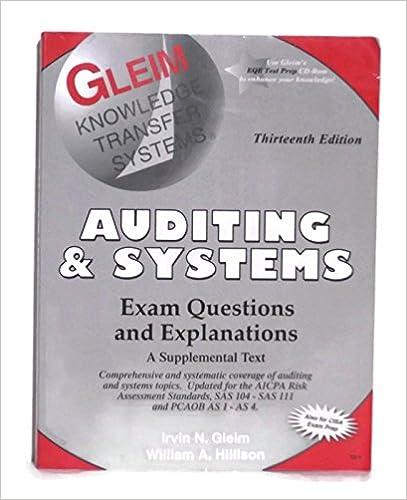



! Required information Use the following information for the Exercises 3-7 below. (Algo) [The following information applies to the questions displayed below.] Laker Company reported the following January purchases and sales data for its only product. The Company uses a perpetual inventory system. For specific identification, ending inventory consists of 300 units from the January 30 purchase, 5 units from the January 20 purchase, and 25 units from beginning inventory. Date Units sold at Retail Units Acquired at Cost @ $ 12.50 = 200 units January 1 January 10 Activities Beginning inventory Sales Purchase Sales January 20 130 units @ $ 11.50 = $ 11.00 = January 25 $ 2,500 1,495 3,300 $ 7,295 160 units @ 140 units January 30 Purchase 300 units @ 630 units Totals 300 units $ 21.50 $ 21.50 Exercise 5-3 (Algo) Perpetual: Inventory costing methods LO P1 Required: 1. Complete the table to determine the cost assigned to ending inventory and cost of goods sold using specific identification. 2. Determine the cost assigned to ending inventory and to cost of goods sold using weighted average. 3. Determine the cost assigned to ending inventory and to cost of goods sold using FIFO. 4. Determine the cost assigned to ending inventory and to cost of goods sold using LIFO. Specific Id Weighted Average FIFO LIFO Determine the cost assigned to ending inventory and to cost of goods sold using LIFO. Perpetual LIFO: Goods Purchased Cost of Goods Sold Date Cost per # of units # of units Cost per unit Cost of Goods Sold # of units sold unit January 1 200 $ January 10 $ 2,000.00 40 12.50 130 at $ 11.50 40 January 20 130 Total January 20 30 (1,610.00) January 25 125.00 160 at (140) Xat 10 at GA 11.50 $ = || C > at at at at at at Inventory Balance Cost per unit $ 12.50 12.50 $ 12.50 $ 11.50 $ 12.50 $ Inventory Balance $ 2,500.00 $ 500.00 = $ 500.00 1,495.00 1,995.00 375.00 || II II = 11 $ EA Average Determine the cost assigned to ending inventory and to cost of goods sold using weighted average. (Round cost per unit to 2 decimal places.) Weighted Average - Perpetual: Goods Purchased Cost of Goods Sold Inventory Balance Cost per Date Cost per # of units Cost per # of units # of units Inventory Balar sold unit unit unit 200 at $ = $ 2,500 500 40 at $ = 130 at $11.50 40 = 500 at $ at 130 $ 1,49! 170 at $ 1,99! 30 at $ 351 300 at $11.00 30 at $ 35% 300 at $ 3,300 330 at $ 3,65% January 1 January 10 January 20 Average cost January 20 January 25 January 30 Totals 160 140 at at $ 12.50 $ 12.50 X Cost of Goods Sold = $ 2,000.00 = $ 1,750.00 $ 3,750.00 12.50 12.50 12.50 11.50 0.00 X 11.74 11.74 11.00 0.00 X A EA $ = = $ = $










